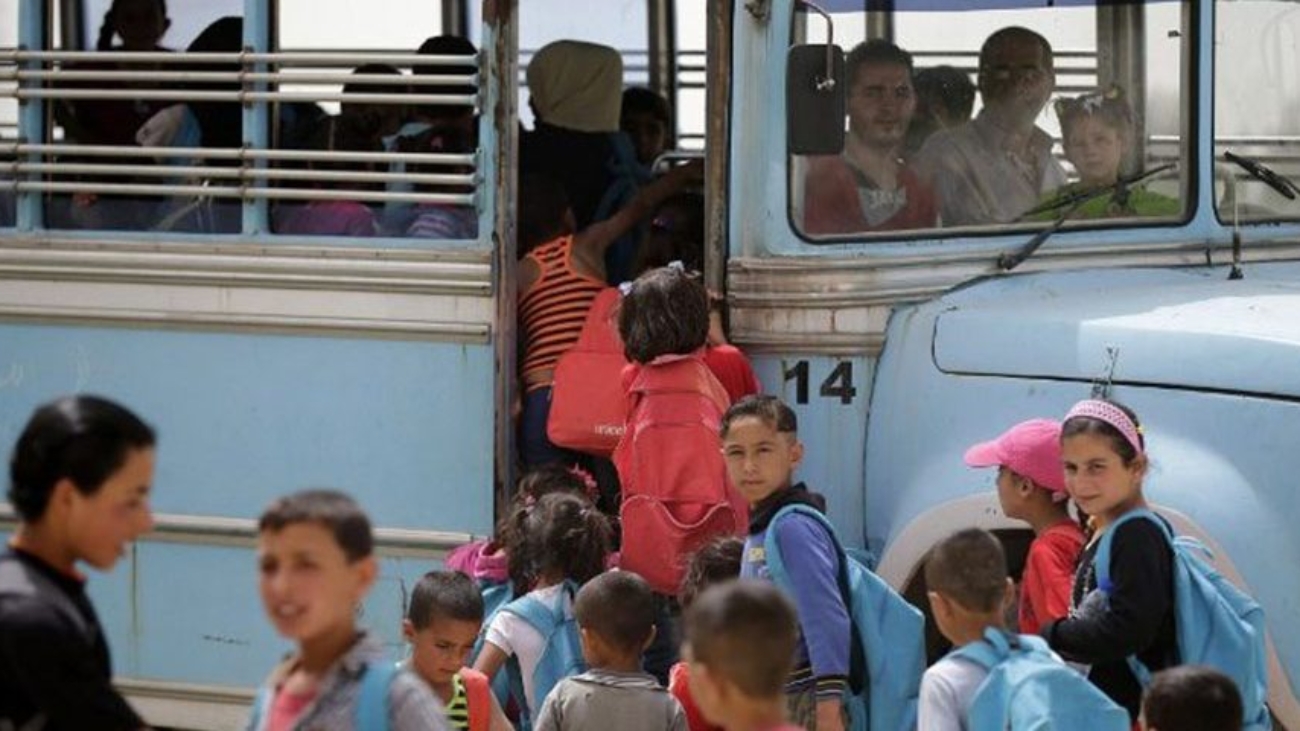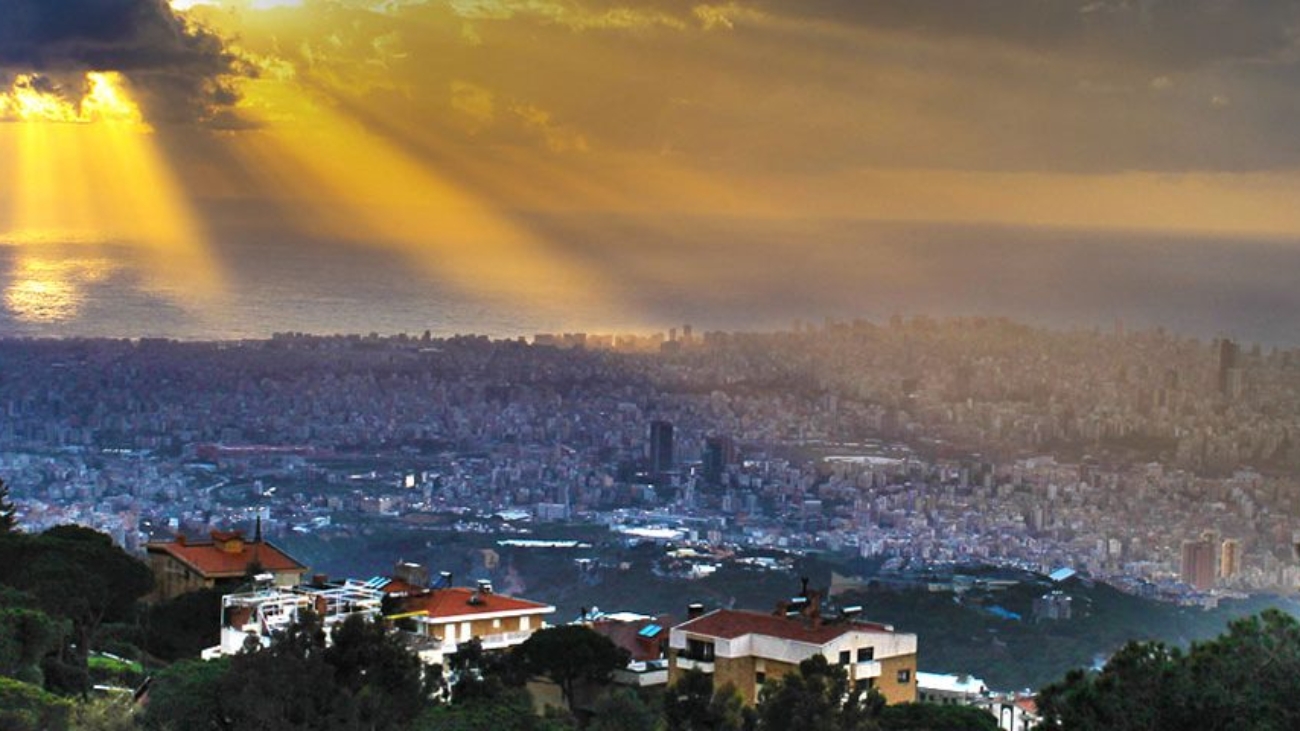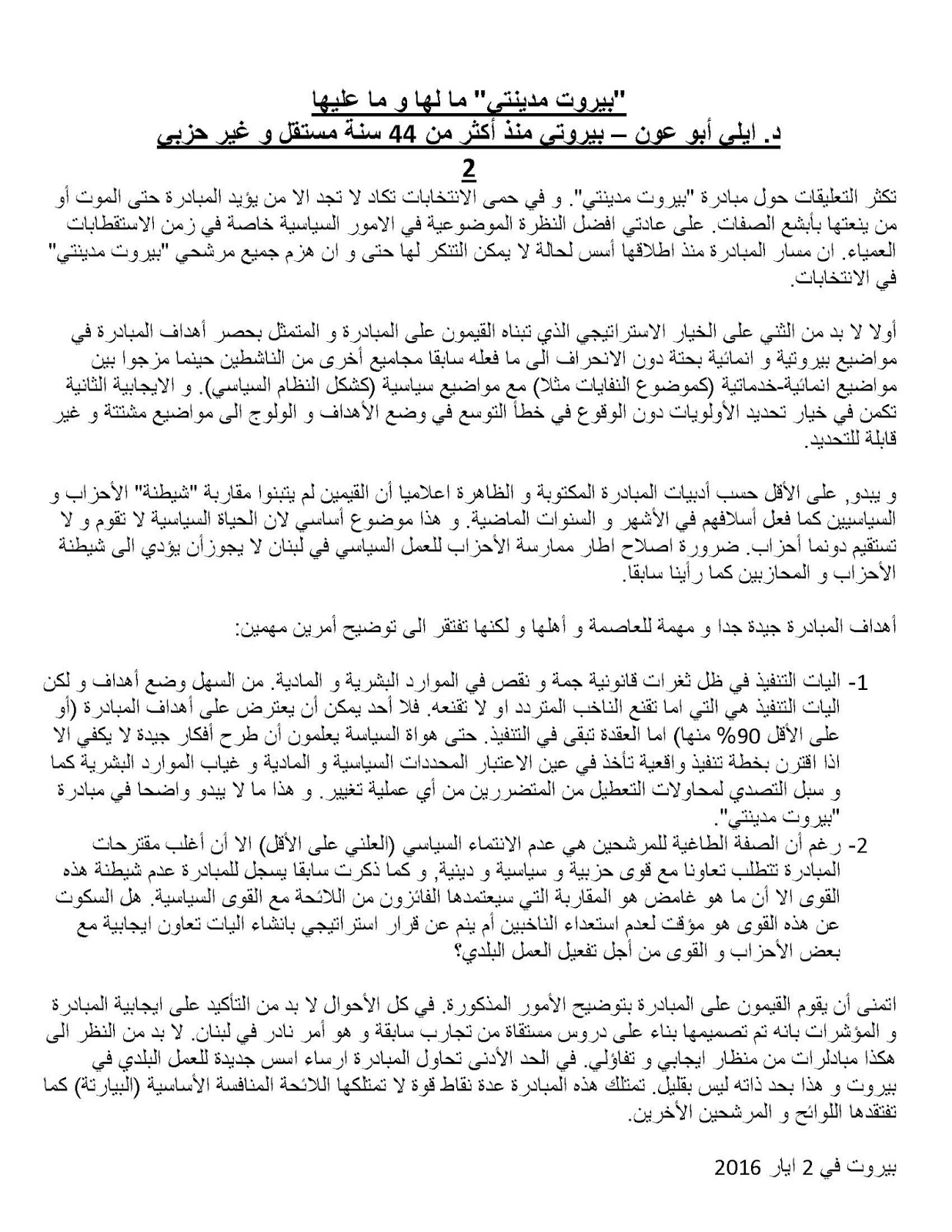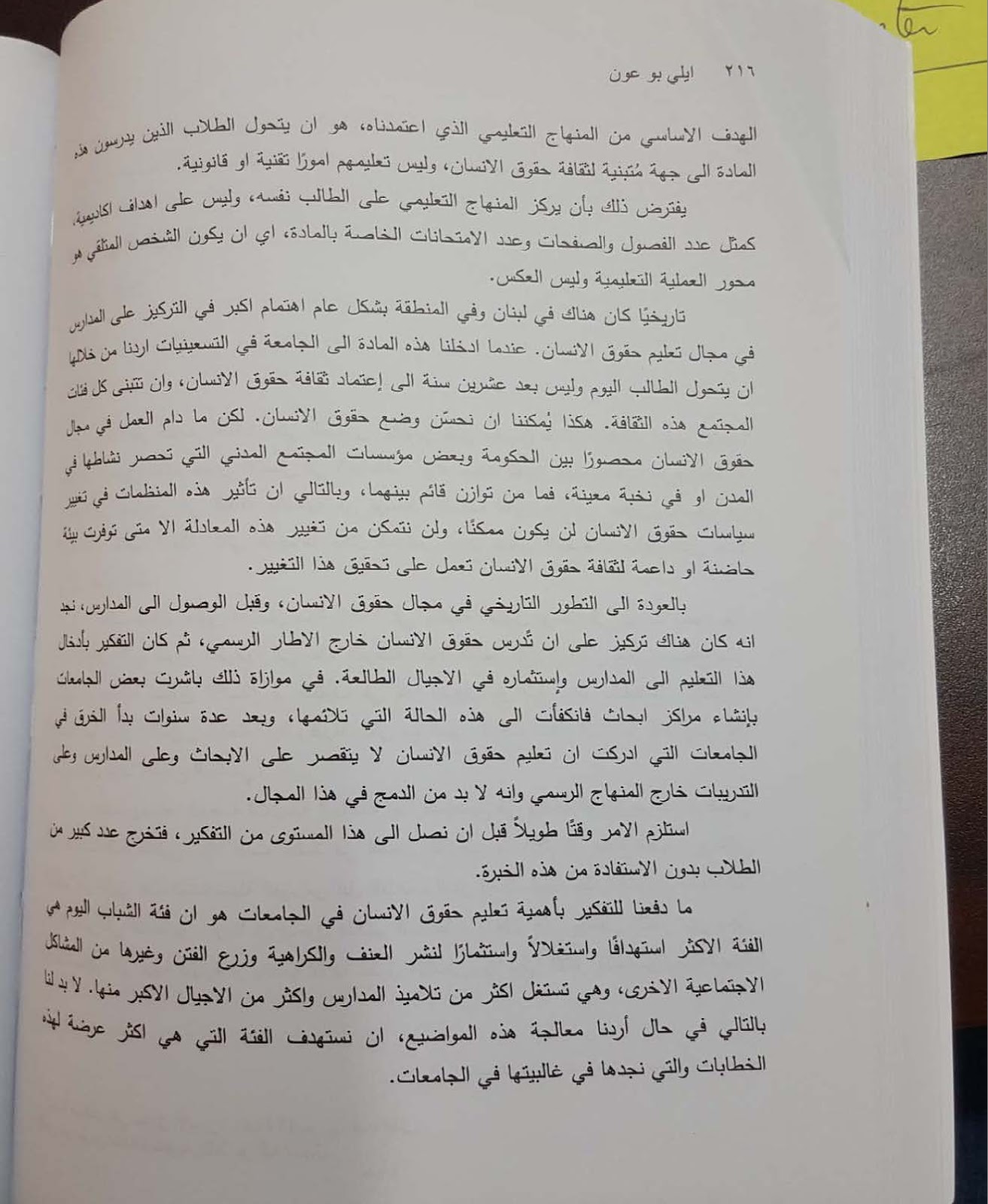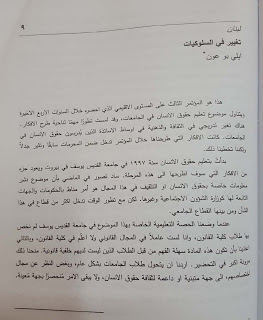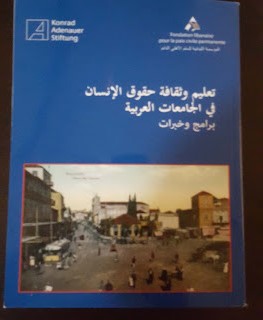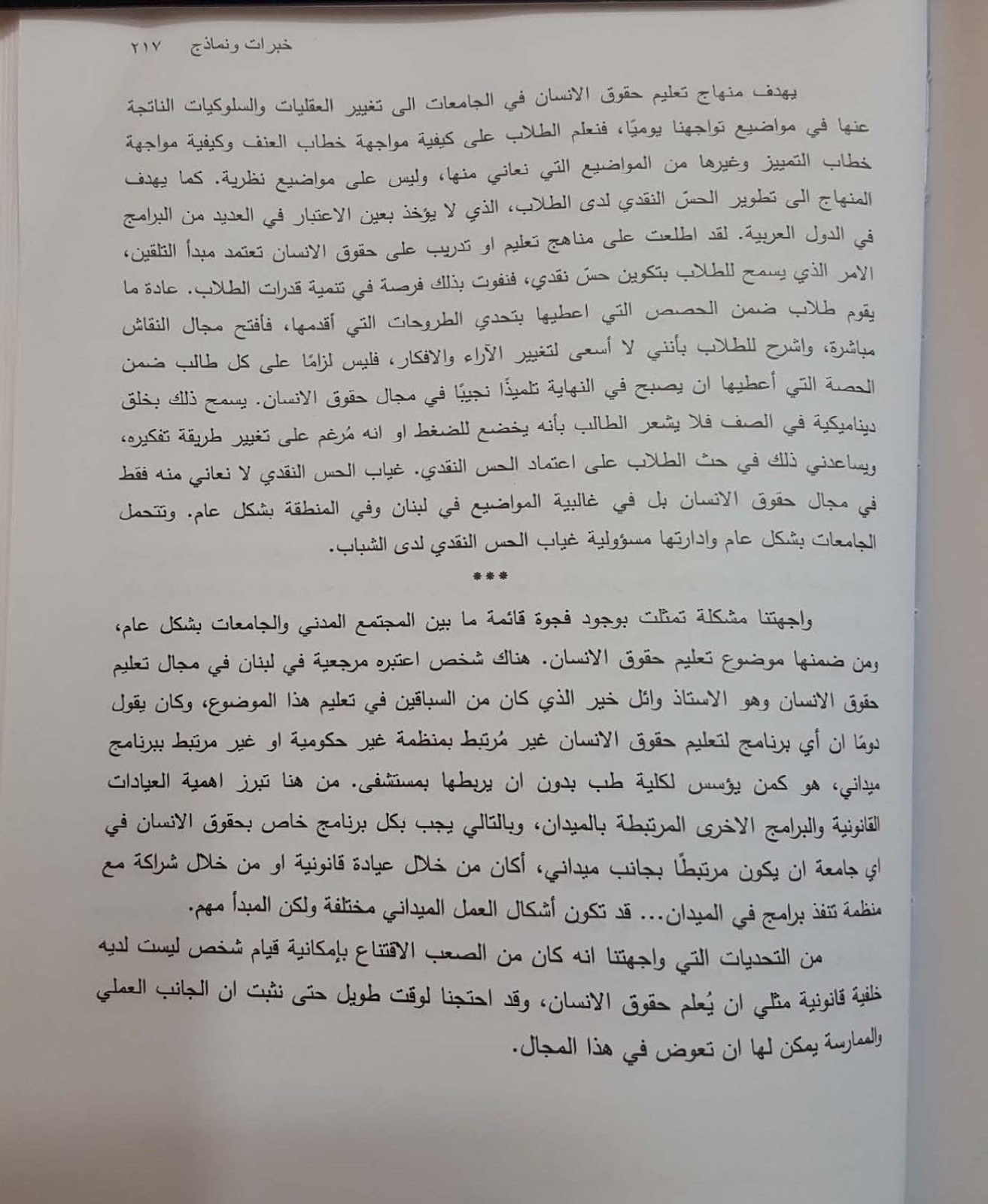Conversation:
Peacebuilding in the Middle East, with Dr. Elie Abouaoun
charonqc.co.uk
This piece was originally published on the U.S. Institute of Peace website usip.org
2015 was the year of the further disastrous turn in the Syrian civil war, and the year of the rise of the terror state ISIS. As 2016 begins, what are the prospects, amidst the air strikes, terror and counter-terror attempts, and city-by-city militia battles, for peacemaking in the terror-afflicted states of the Middle East and North Africa?
Dr. Elie Abouaoun
is the Lebanon-based Director of Middle East Programs for the United States Institute of Peace. In this Conversation, exclusive to Charon QC, he offers us his insights into the strife and the solutions.
Michael Cavendish
MC: Dr. Abouaoun, you are a professional human rights and peacebuilding practitioner serving with the United States Institute of Peace as the Director of Middle East Programs, and you are based in Beirut, Lebanon. How did you get started in human rights advocacy and peacebuilding in the MENA (Middle East and North Africa Region)?
EA: My interest in public issues started in my teen age as I was involved with the Lebanese Boy Scouts Movement. During my university training, I got involved as a volunteer with a French-based human rights group. I discovered a personal interest in this field, and started acquiring more knowledge, given that my original academic background was in Dental Surgery. Things evolved quickly; I was called to be part of small projects and training workshops in Lebanon and the Euromed region. In 2003, I was offered a job in southern Iraq in the aftermath of the US military operation that toppled Saddam Hussein. After several years working between Iraq, Jordan and Beirut, I was employed by the USIP, first on the Iraq program, and then in a regional capacity.
MC: Are there specific projects you are working on at the present that you can share with us?
EA: We are working on several projects in the Middle East. In line with its mandate, USIP implements projects aiming at building local capacities on conflict related issues, doing research to inform the US public policy on peacebuilding, as well as playing the role of a convener and facilitator between parties to conflicts. Most of USIP’s projects are done in partnership with local actors, whether governmental or non-governmental.
MC: You witnessed the political geography of the Middle East in the period before the 1990-91 Gulf War, and then you had the opportunity to study the same thing during what we might call the early post-U.S. period following the tail-end of the 2003-2011 Iraq War, and now you are witness to I think what could be labeled the Civil Wars years in both Iraq and Syria. How in your view have the prospects changed for the individual man, the individual woman, the isolated locality—your exemplar Syrian or Iraqi town—to find their way back to local life without local armed conflict?
EA: It is hard for the average citizen in the MENA region to think outside the framework of conflicts. The level of violence in the last fifteen years, combined with decades of autocracy and/or theocracy, shaped the mindset of people in the region to an extent that they are not able to envisage their future in isolation from the current events.
What has changed though, is that the expectations of people are now “diluted” somehow. In the 1970’s and the 1980’s, the focus was on the Israeli-Palestinian conflict and on issues related to what the leftists in the region called “social justice.” The rise of the Islamic Jihadism in the 1990’s altered the political landscape and posed new challenges, or to be more accurate, highlighted the scope of the “Islamist” problem. In all these struggles, no significant win was achieved. The Palestinians are still stateless, Palestinian refugees are all over the region, dictators were heavily supported by the West under the justification of “preserving stability and preventing Islamists from gaining power,” the economic disparities are larger than ever, the human rights records in the region is still very poor, et cetera. The 2011 uprisings were interpreted by some as the jumping board to freedom, democracy and prosperity. But the failed transition in Iraq, Yemen, Egypt & Libya, added to the unprecedented level of brutality by both the Syrian regime and its opponents in Syria, have added to the dismay of people about the chances of success. The only exception to this grim picture is the extremely fragile – though relatively successful- Tunisian model.
MC: In a white paper the USIP released of January of 2015 you gave two observations. One was that we are in the midst of the age of militarization—the age at which a male turns about 15 and can be thought of to take up arms—of those children of the Iraqis who fought in the Iraq War, starting in 2003. The second was that you have observed a higher tolerance of, perhaps emotionally a higher willingness to resort to violence, among roughly this same demographic of young men in Iraq, than you would have seen in that same cohort of age in 2003, or prior. Are you concerned that the repeated war events in the Gulf since 1990 are creating within Iraq and other areas influenced by Iraq a cultural imprint depicting war and low level armed conflict, shootings, bombings, as a part of a value system that is passed from father to son?
EA: Needless to say that violence did exist in the region pre-2003. As a matter of fact, many countries in the region have witnessed atrocious conflicts such as the Lebanese civil war, the Algerian civil war, the Inter-Kurdish war in Northern Iraq in the mid-1990s, as well as dozens of smaller scale but very violent conflicts (crushing the Muslim Brotherhood in Hama-Syria in the early 1980s, crushing the Shia uprising in the early 1990s…). This is not new. However, many contextual elements have changed and these developments might need to be considered as red flags. One of these changes is the growing role and legitimacy of militarized non-state actors. Not only they are trained and equipped by regional and international actors, but these small to medium size armed groups have acquired a legitimacy that their predecessors did not necessarily enjoy.
For example, it is perfectly “normal” nowadays to endorse and facilitate the movement of Kurdish fighters from Iraq’s Kurdistan to go through Turkey and fight in Kobane. The same applies to Shia militants from Iraq and Lebanon fighting in Syria. More recently, UAE has enrolled mercenaries from Latin America to support their units in Yemen. YPG units are seen as partners of the international community in Syria, Jabhat Al-Nusra is being marketed by some GCC countries as “legitimate” actor or “freedom fighters” in Syria, and there are many other examples highlighting the increased capacity and legitimacy of these non-state actors. The presence of hundreds of distinct armed groups in Syria, Iraq, Lebanon, Yemen, Libya, et cetera, poses a serious challenge to the prospective stabilization efforts of these countries.
How can any Iraqi government deal with 60.000 to 100.000fighters who have been fighting for several years on their own, outside any legal or governmental framework?
Are we trying to imagine the scope of this problem once the conflicts tends to an end? This same question applies to Syria, Yemen, Libya and some extent Lebanon. There are thousands of fighters who have been involved in military and criminal activities for several years, in addition to thousands of youngsters who are outside the education system because of displacement. The impact of this reality on the future of the region is of particular relevance given the long prevailing social paradigms in the region that consider “violence” as a strength and virtue, rather than a vice.
All societies in the world went through this madness at some point in their history, but many of them have learned. It is unfortunate to realize that people in the region are still in the denial phase. For them, the problem is always imputed to “Foreign intervention”, “Colonialism”, Israel, Iran, Turkey, GCC, et cetera. In a nutshell, it is always someone else’s’ responsibility but no one is admitting that the root of the problem lies in the people of the region themselves. They were unable to generate a good model for diversity management and have resorted instead to a blame game. This means that stabilization efforts should include a component of “social transformation” for the people in the region to start demonizing violence. Otherwise, we will be just jumping from one war to another.
MC: Can we or should we draw a contrast between the status of the young man surrounded by conflict in Iraq or Syria versus a peer of his surrounded by conflict in Lebanon? Is there a distinction to be made between working on post-conflict identities for the young man in a state where conflict is being summoned versus a young man in a state like Lebanon where the conflict is spilling in as an import?
EA: I don’t see major differences between countries where the conflict is ongoing compared to those bearing the spillover of a given conflict. There are certainly minor context-related specifics, but with very little impact on the overall dynamics. The prevailing reality in the region is one of weak national identities compared to the ethno-sectarian ones. This is a legacy of years of inappropriate political governance models imposed by the secular Colonial powers who just decided that “a national identity” can be imposed. The result is the chaos and violence we are seeing today. On another level, the justification of violence— the fear of being eliminated—is almost the same in Syria, Iraq, Lebanon, Libya and other places. A Sunni in Lebanon has the same fear as does a Sunni in Syria. The same applies to a Shia in Iraq and Shia in Lebanon. All of them accept a resort to violence under the pretext of “self-defense”.
MC: In another USIP white paper just released last month, the British politician David Miliband was credited with adopting the quote that as of today: “the Muslim world is living through its own Reformation, Declaration of Independence, American civil war, and collapse of communism all at the same time.” Within Syria I tend to think that view is hard to counter, but from your vantage point, is the majority of the MENA region experiencing such a disruptive level of conflict? What is the most apt analogy to history we can apply to the Middle Eastern Muslim populaces in terms of the conflicts of the past several years and what we can see around the bend?
EA: The level of violence is different from one country to another but the conflict depth and dynamics are the same. I am not sure there is one relevant historical analogy, but I would say that the peoples in the region are going through their own political transition after centuries of occupation, colonialism, monarchies and dictatorships. What is different is that the actors leading this change appear to be as bloody and repressive as the previous regimes. Here comes the fact that the social paradigms—praising violence— are not helping the transition processes to generate an inclusive model of governance. In Iraq for example, those who came to power after Saddam used exactly the same approaches in government. But instead of having one dictator, we have seen many of them trying to split the cheese among themselves. Failing to work on the social level, the transition in the region will remain bloody and uncertain.
MC: The militia operating as the self-styled caliphate IS, some now call them DAESH, has carved out a fluid, temporary state comprised of one-third of western Iraq and one-third of eastern Syria. And then, through terror killings and threats of further terror attacks, IS has seemed to intentionally provoke all three of the planet’s military super-powers—the U.S., Russia, and China—into agreeing on taking military action against them. Have observers discerned a deeper belief held by a wide spectrum of the IS hierarchy that could explain what seems to be such an irrational, non-professional strategy from the very top of the IS hierarchy?
EA: That ISIS lacks a rational strategy does not need to be proven or justified. The “Islamic State” is not based on the Western State model and therefore comparing both models does not seem to me very relevant. ISIS is not working to capture one specific country and transform it into an “Islamic State”. They are rather after a model that is a trans-national, inspired from the “Islamic Umma” model, where all Muslims in the world live under Islamic Charia, irrespective of borders and national identities.
MC: You had also indicated in a previous discussion that formal or traceable financial support to IS from neighboring states, particularly those states in the Gulf Cooperation Council organization, is not evident, yet there are suggestions that wealthy individual sympathizers living in those other Arab nations are intentionally directing financial support to IS through low-key channels such as religious charities. In terms of popular politics in the region, profile for us the makeup of private interests that would be interested in seeing IS transform into a permanent state in its current physical footprint.
EA: The motivation of ISIS supporters are different. Some of them see this organization as a Sunni defense line against Shias and Iran’s expansionism in the MENA without necessarily endorsing its precepts. Others believe firmly in the “Islamic Umma” model and see ISIS as a continuation of previous similar initiatives (Wahhabism, Al-Tahreer party, et cetera) who called for one Islamic Umma. When you look at the grass root constituency of ISIS, you can easily detect a majority of people who see ISIS as bad, but less harmful than a Shia hegemony over their countries. However, the longer ISIS controls an area, the higher risk we incur in seeing people accepting their political vision.
MC: The exodus of Syrian people out of Syria is the hottest news imaginable right now in America and much of Europe. But it is old and ongoing and ever-present news in Lebanon, and Turkey, and in some other nations that are near to Syria. Lebanon’s population has swelled with Syrian refugees such that one-fourth or one-fifth of those people currently residing in Lebanon are newly-arrived Syrians. Just from a standpoint of culture and political culture what initiatives are needed from a peacebuilding standpoint to address the sheer cultural disruption of adding such a huge population of refugees fleeing a civil war climate?
EA: It is hard if not impossible to convince people in Lebanon, Jordan or the Kurdistan region in Iraq that this huge and disruptive (to their social cohesion) number of refugees compared to their population is going to stay and that they have to accept the fact. There have been many calls by politicians, activists and relief organizations about the need to envisage a consistent “demographic burden sharing” policy. Unfortunately, very little has been done by the International community at this level. It is not about humanitarian solidarity. On the contrary, the above-mentioned societies have shown a great sense of solidarity. It is just that this huge demographic burden is looked at from the “fear of elimination” lens, i.e. the possibility of seeing permanent or long term demographic changes occurring in these countries.
MC: Quite a bit of today’s strife in Iraq and some of the surrounding states is placed at the feet of the Sunni vs. Shia sectarian divide within contemporary Islam. I don’t think anyone discounts that in some localities this divide has devolved into active hate and violence, with reprisals back and forth. But if you are asked in terms of a state-level political future for Iraq, for Syria, or for Muslim Arab neighborhoods in other places, is the Sunni-Shia divide a scapegoat that is catching blame for other causes and motivations for conflict?
And is it safe to assume that—again apart from certain localities that the wars have ravaged the hardest—the average Iraqi and the average Syrian do not see Sunni-Shia differences as any kind of implacable obstacle to a lasting nationhood or a functioning state that can provide services and also protect the individual?
EA: The political affinities in the region have been built around ethno-sectarian identities since ever because of the chronic absence of diligent state structures and inclusive national identities. Today’s conflict is indeed a Sunni-Shia one, but it is not primarily a religious conflict as much as a struggle of power between groups that identify themselves as “Shias” (without necessarily being themselves pious Shias from a religious standpoint) and “Sunnis”, the majority of whom are not necessarily following the “Sunna” in every single aspect of their life.
It is not a war between two religious institutions (the Najaf Shia religious pole and the Sunni Azhar in Egypt for example). The conflict is between two socio-political groups, called Sunnis and Shias. I know Shias in both Iraq and Lebanon who know very little about Imam Ali and his teachings; yet they are proud to be fighting Sunnis. It is just that they were borne in a Shia family or tribe that they consider themselves as Shias. And they consider the “Wahhabism” a threat to their existence as a collectivity not as a religion. The Sunni-Shia divide existed since the seventh century and took different forms, but it was always a political one more than a religious. The whole issue started as a war of succession to Prophet Mohammad after his death.
In the aftermath of the French withdrawal from Lebanon in 1943, Lebanese political actors discussed a “national pact” that regulated Lebanon political life until the war in 1975. During these discussions in 1943, the Sunni-Shia divide was an issue and one of the arrangements was to give the position of the Speaker of the Parliament to the Shias and the Prime Minister position to the Sunnis. But those who were discussing these arrangements were not religious actors. They were political leaders who had very little to do with the Islamic mode of living.
MC: The writer Kurt Vonnegut once remarked that life on this planet can be so hard at times, for anyone, that adults should issue all children with a standard book explaining where the ‘hard knocks’ that are waiting for them will come from and what are the strategies or the coping skills the adults that have survived those employed.
If we think about the youngest of the young demographic in the MENA region, children of age five and younger, equipping them with a workable plan to find a way out of a tribal conflict, a religious sectarian conflict, and then a citizen-vs-regime conflict that might be waiting for them and their demographic cohort, seems like a naïve idea but at the same time seems like an interesting idea. Because no other young population in recent history has been asked to—if we go back to David Miliband’s quote—extract themselves, all at once, from a sectarian reformation, a civil war, and a post-colonial or post-dictatorship revolution type of war. Is there any sense from where you sit that the MENA state populations need an intervention of beneficial anti-conflict advice the likes of which the world has never authored, perhaps because it has never had to?
EA: What is absolutely necessary is to show people in the region, kids and adults, that there are alternatives to violence in dealing with conflicts, and that the cost of war is always higher than the cost of political compromises. However, this approach does not really work in cases where the conflict is driven by the fear of being eliminated. This is why the international political and diplomatic efforts should be first focused on addressing this specific issue. In the meanwhile, other interventions work on conceptualizing and disseminating the benefits of the alternatives to violence. Both tracks need to be carried over in parallel.
MC: As we speak, the U.S., France, and Russia are running bomb raids across IS-held Syria. The U.K. has recently formally joined in the bombing runs. What effect on the IS territories in Syria do you think a sustained conventional bombing campaign—let’s say it continues for 12 months— will have?
EA: Sustained and multilateral military campaigns will certainly allow military gains on the ground. But with the present political disengagement of the West and increased militarization of non-state actors, I can hardly see how such gains can feed into the process of stabilizing Syria and Iraq. I just don’t see the direct correlation between the two.
MC: There is further talk that a number of nations may commit ground troops into Syria. Russia has started this, and France could follow, and the U.K. again through the Cameron government is floating out the idea of a U.K. ground troop presence in Syria after a defeat of IS. Is a post-IS Syria that is occupied by foreign ground troops a place that, in your estimation, an appreciable number of Syrian refugees will willingly return to?
EA: I am always resistant of the temptation to advance figures for such complicated matters. What is the difference if 40 or 60% return? You would still have thousands of families not willing or not able to return. The idea that ISIS is the reason for displacement is by itself misleading. The main motivation for any Syrian to return is to see a credible stabilization process being put in place. This element seems to be missing from both the US and the Russian strategies. Hence, I don’t see a lot of families packing to return home in the short to medium term.
MC: As a professional peacebuilder, what are some non-military initiatives for Syria and Iraq you would like to see the world powers and also the regional powers— Saudi Arabia and Iran—pursue?
EA: As stated above, a credible stabilization process within a clear political framework is needed to allow a sustainable peace. This should include inclusive governance models that would address the prevailing fear of elimination, as well as a compromise between the Sunni countries (mostly Saudi Arabia and Turkey) and Iran on a modus operandi in the region; a sort of a mutually agreed delineation of the zones of influence of the regional powers. Short of these two requirements, military gains will remain short-lived.
MC: It is not popular to talk about Balkanization—the permanent or long-term redrawing of national borders into smaller units to yield to ethnic or sectarian or tribal homogeneities. But in your view, are there states in the MENA that would benefit, both within themselves and from the standpoint of their neighboring states, from being divided into smaller units of, say, Sunni Iraqis, Sunni Syrians, Turkmen, Kurds.
EA: My view is that the social and cultural links as well as economic interests between the various ethno sectarian communities in the MENA are historic and sufficient enough to avert any attempt of re-mapping the region into small ethnic based entities. Having said that, maintaining countries such as Syria, Iraq, Yemen and Lebanon takes more than acknowledging these ties. It has go to the crucial aspect of finding inclusive governance models that give each constituent enough guarantees that the others will not eliminate them, that they will have enough autonomy to govern themselves while allowing for cross ethnic collaboration. Such a model would be closer to decentralized federal system whereby regions are administered by their own people without pushing necessarily for complete secession. It is a fine balance that needs to be found between addressing governance issues and political inclusion without inciting people to ask for a separation. It is worth noting in this regard that redrawing the map of the region in the direction of small and demographically homogenous entities will lead to more conflicts in the present context of fear and caution. So the cornerstone of any viable solution is addressing the valid concerns of the various constituents and then moving to negotiated political settlements.
MC: You co-authored a 2011 piece observing that Iraq’s then-government was worried, and perhaps was alerting other nations, of the chaos that could ensue within Syria if Bashar al-Assad were removed, and how that chaos could spread directly next-door to Iraq. Exactly this has come to pass in the form of IS, although it did not require Assad’s complete removal, only the incomplete rebellion against him. This is a bitter “I told you so” for Iraqi officials, but to your view how does it, as an unheeded warning, affect Iraq’s willingness to burden-share or make further sacrifice for a solution to the open crisis that will be post-Assad Syria?
EA: Unfortunately, Iraqi political forces are captive of their own regional patrons. They are not in a position to craft any role for Iraq in regional politics outside of their patrons’ will. I don’t see them in a position to craft a place for an Iraqi agenda in the regional turmoil.
MC: What is one solid-footed step of peacebuilding work you would like to see happen in 2016 in a state in the MENA in turmoil?
EA: The key to stabilization and peacebuilding lies in two tracks: inclusive governance models and consistent engagement by international and local actors, to induce a social transformation that would demonize violence.





